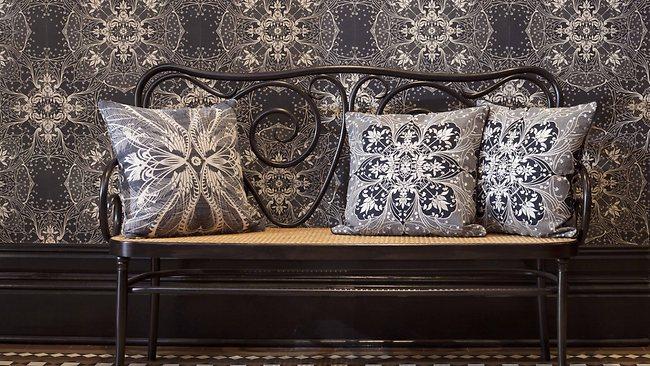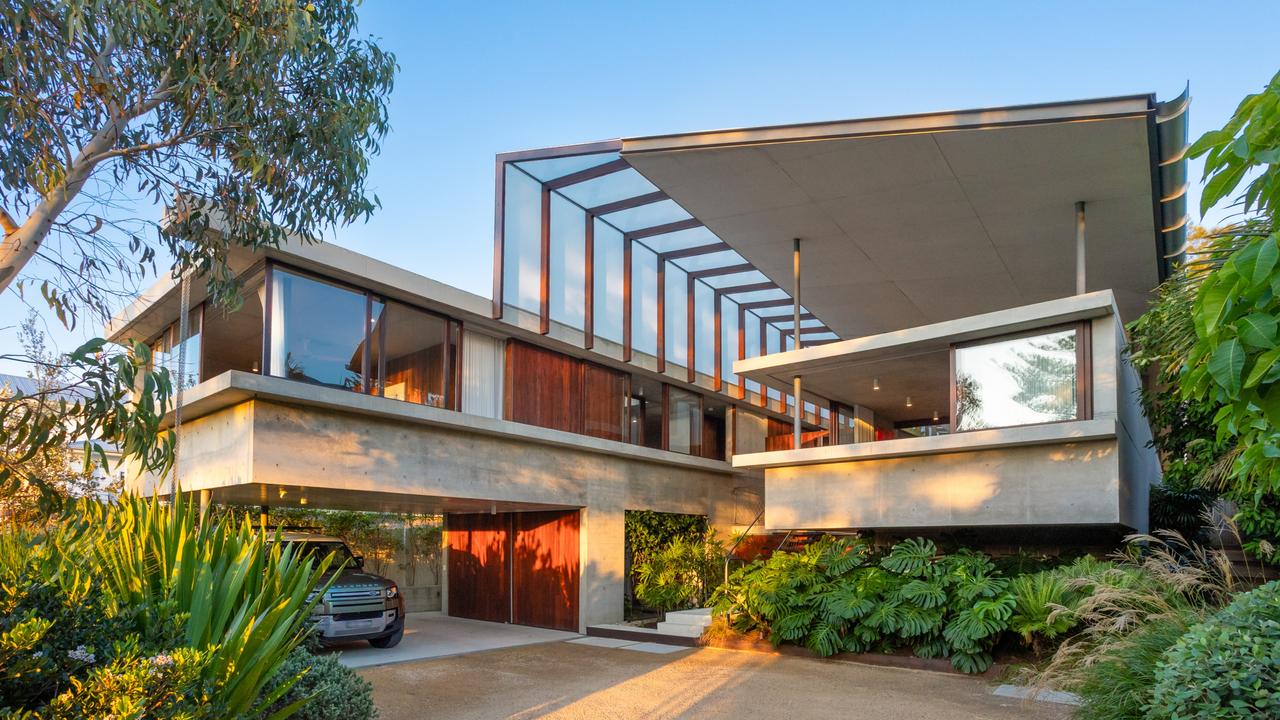Catherine Martin moves from film sets to interiors
AFTER a career spent largely on the film set, Catherine Martin's new passion is textiles.

THE worlds created by director Baz Luhrmann on screen in Romeo + Juliet, Moulin Rouge, Australia and the upcoming The Great Gatsby share a spectacular visual language created by his collaborator and wife, designer Catherine Martin.
A passion for print, deep understanding of colour and ability to interpret historical references with a contemporary sensibility have earned her international recognition, including the Academy Awards for art direction and costume design for Moulin Rouge.
Since 2008 Martin's designs have slipped from the silver screen into Australian homes with collections of wallpaper and rugs, and now she has expanded her domestic dialogue to include fabric.
The starting point for Martin's debut collection with Mokum Textiles was her research for the 2008 blockbuster Australia, starring Nicole Kidman and Hugh Jackman.
"My main inspirations in developing the Australia range of fabrics and wallpapers were the flora and fauna of Australia, traditional haberdashery, soft furnishings and lace and chinoiserie," Martin says. "Regarding the Australian flora and fauna, I was very specifically drawn to the late 19th-century Federation movement that saw a number of artists use both arts and crafts and an art nouveau approach in formalising Australia's wild indigenous flora and fauna."
The arresting prints are the result of years of painstaking work that Mokum's design director Stephanie Moffitt says sets the collection apart from the plethora of celebrity collaborations in the homewares market.
"This isn't just a random celebrity sitting down and editing existing product," Moffitt says. "Catherine and her team sit above their sketchpads and create these designs. It all started from her hand. The talent, experience and effort behind this collection will make it a success."
With its design studio in Sydney and head office in New Zealand, Mokum has been at the forefront of luxury textiles in Australia for 30 years, but this is their first collaboration. It is just one sign of an industry in transition.
"It's a very crowded market at all levels of industry," Moffitt says. "Australia is a very competitive marketplace. People want value. However, value at all ends of the market is important - even at the high end. If you're paying top price for something, you should now why it's the best."
The added value of the Australia collection is its glamorous associations with Hollywood, as well as Martin and Luhrmann's bohemian milieu.
"With each piece you have a peek behind the scenes of Bazmark (Luhrmann and Martin's production company), which is incredibly exciting. Hearing Catherine's experiences and her inspirations, there is no doubt that she lives an amazing life."
The partnership developed when Martin contacted Mokum about developing her existing designs into textiles.
"We were lucky," Moffitt says. "We were called up out of the blue by Catherine and jumped at the chance. When she first released her wallpaper and rugs we were envious and it made us lift our game.
"So the opportunity to work with her designs and translate wallpaper into textiles was a gift.
"The most impressive thing is that she is so down-to-earth. There was a lot of work getting these textiles right. It's a difficult business where each stitch is an added expense, but Martin's team were open to the challenges."
One area that Martin was passionate about incorporating in the collection was chinoiserie, an interesting fit with the Australian aesthetic.
"My lifelong interest in chinoiserie was piqued by my study of the prominent Chinatown featured in Australia in Darwin during World War II, the influence of which can be seen in the firebird and cherry blossom patterns."
The richness of pattern is overwhelming to Australian eyes raised on a spartan visual diet of white walls and plain fabric, but Moffitt says tastes are turning to towards bolder interior statements.
"People are wanting pattern and colour again but not to the level that we saw in the 1980s where people would have printed curtains and walls. Now print is a focal point on a wall or piece of furniture - your whole house isn't filled with it."
Martin won't be offended if customers decide not to paper their entire house and lounges in prints of antique lace and heritage stripes.
"I am a great advocate of white, plaster walls," Martin says. "I enjoy the ephemeral nature of wallpaper and the permanence of the plaster that lies beneath the paper."


